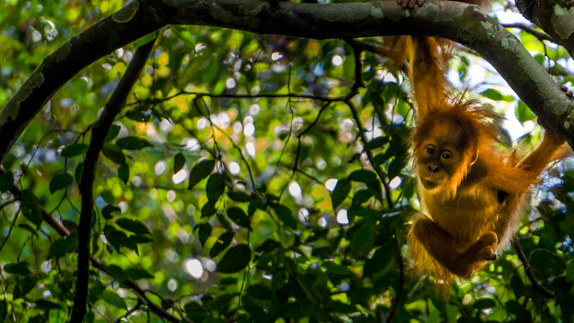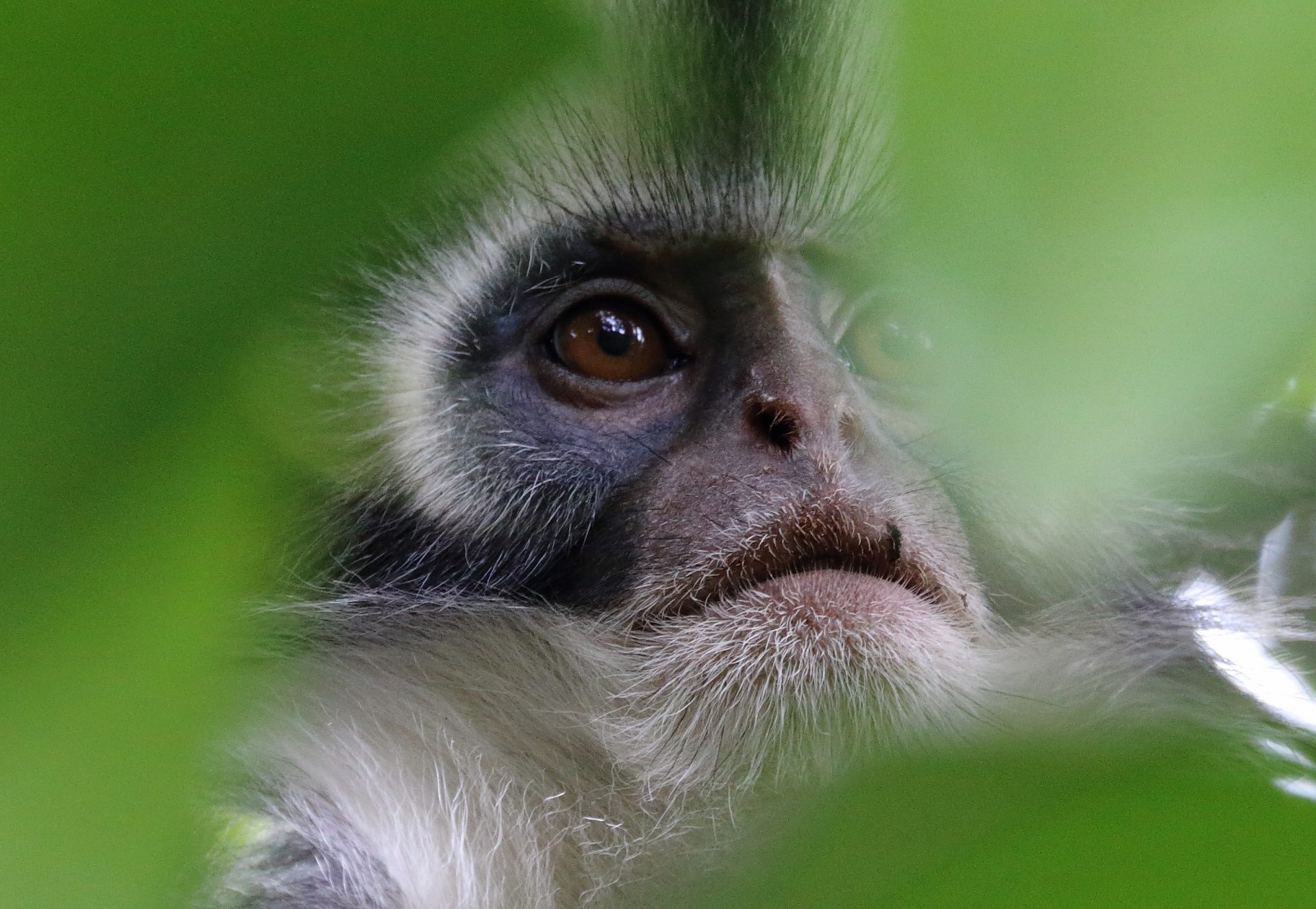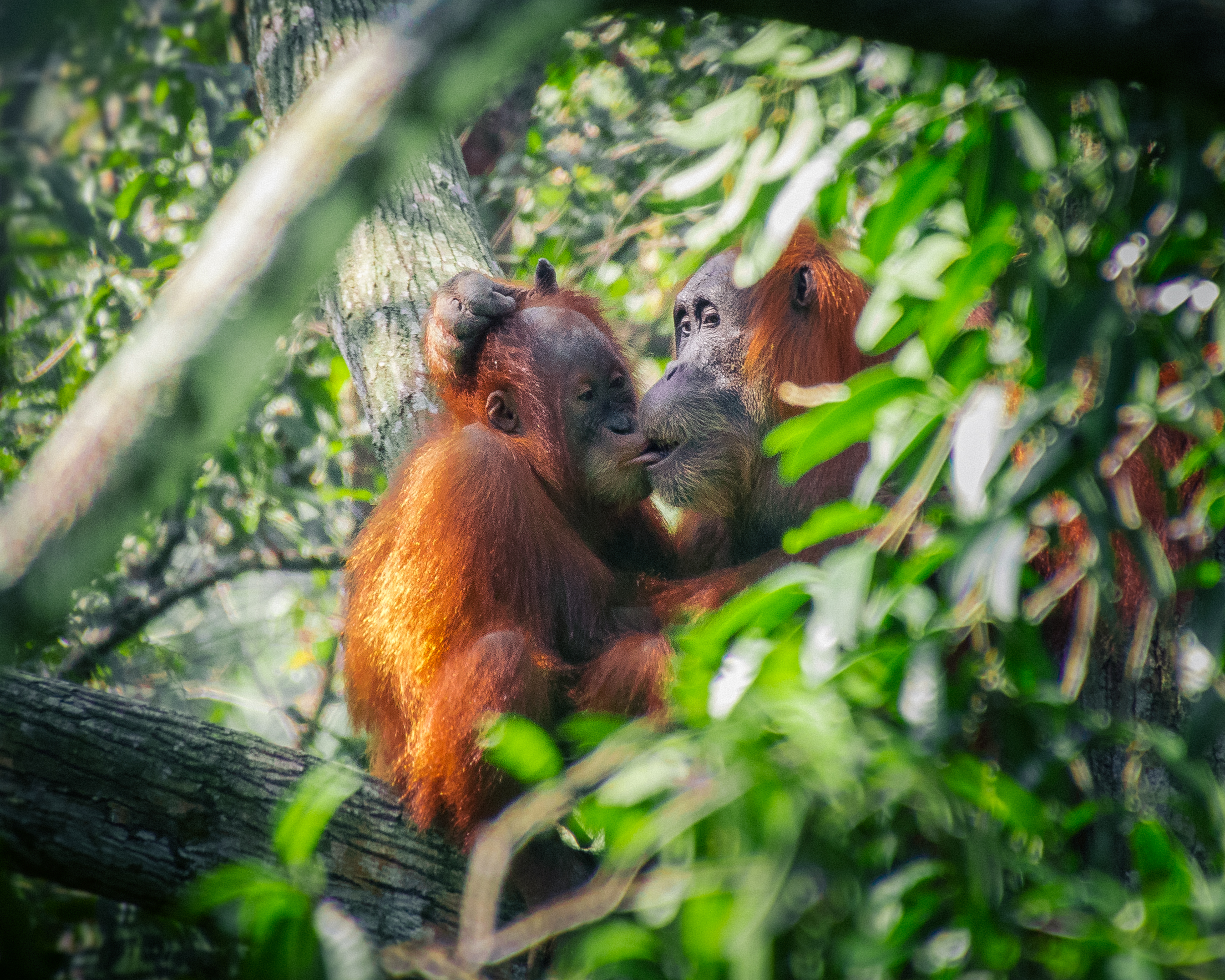Lar Gibbon (Hylobates Lar)
The lar gibbon (Hylobates lar), also known as the white-handed gibbon, is a primate in the gibbon family, Hylobatidae. It is one of the better-known gibbons and is often seen in zoos.
Size life span and home range : Male size is 4,9 to 7,6 kg and female 4,4 to 6,8 kg.. they can life uf to 44 years. they home range is from 16 ha uf to 54 ha.
Appeareance : A beautiful and captivating primate ,the Lar or white handed gibbon is a master of agility. as true brachiator ,gibbons are much admiredfro they remakably fast, yet seemingly effortless, suspensory motion troughthe tree. the white hunded gibbon possesses the typical gibbon’s long arms and hand, which make them perfectly equipped for swinging from branch to branch. despite lacking a tail , the gibbon”s sense of balance is suprisingly acute, and it can even be found walking on its hind legs along brancheshigh above the ground. characteristically raising it arms above its head for balance. Individuals vary in color from dark brown or black to red – buffand pale fawn, but always with white fringe framing the black face and white upper sides of the hand and feet. Males and females are very similar in size and can have all color variants. their unmistakable call. a loud whooping sound , is enhanced by a sound -amplifying throat sac and can be heard from a great distance.
Distribution and habitat :
Lar gibbons have the greatest north-south range of any of the gibbon species. They are found in Indonesia, Laos, Malaysia, Myanmar and Thailand. Their range historically extended from southwest china to Thailand and Burma south to the whole Malay penisula in primary and secondary tropical rain forests. It is also present in the northwest portion of the island of Sumatra In recent decades, especially, the continental range has been reduced and fragmented. Lar gibbons are
likely extinct in China, but if they still exist, they would only be found in southwest Yunnan, their former range.
Lar gibbon are usually found in lowland dipt erocarp forest, hill dipterocarp forest, and upper dipterocarp forest, including primary lowland and submontane rainforest, mixed deciduous bamboo forest, and seasonal evergreen forest. They are not usually found higher than 1200 meters above sea level. The gibbon genus is highly allopatric, usually separated by large rivers. As a result, their range extends through southern and eastern Myanmar, but only east of the Salween River. They are found through the Malay Peninsula. Lar gibbons also exist west of the Mekong River in northwestern Laos and northern Sumatra. The lar gibbon can be found living in sympatry with several other primates and apes, including orangutans (Pongo pygmaeus), siamangs (S. syndactylus), pileated gibbons (Hylobates pileatus), purple-faced langurs (Trachypithecus spp.), Thomas’s langur (Presbytis thomasi), slow loris (Nycticebus coucang), and several macaques (Macaca spp.) In Thailand alone, lar gibbons probably number between 15,000 and 20,000
erocarp forest, hill dipterocarp forest, and upper dipterocarp forest, including primary lowland and submontane rainforest, mixed deciduous bamboo forest, and seasonal evergreen forest. They are not usually found higher than 1200 meters above sea level. The gibbon genus is highly allopatric, usually separated by large rivers. As a result, their range extends through southern and eastern Myanmar, but only east of the Salween River. They are found through the Malay Peninsula. Lar gibbons also exist west of the Mekong River in northwestern Laos and northern Sumatra. The lar gibbon can be found living in sympatry with several other primates and apes, including orangutans (Pongo pygmaeus), siamangs (S. syndactylus), pileated gibbons (Hylobates pileatus), purple-faced langurs (Trachypithecus spp.), Thomas’s langur (Presbytis thomasi), slow loris (Nycticebus coucang), and several macaques (Macaca spp.) In Thailand alone, lar gibbons probably number between 15,000 and 20,000
Diet and dentition :The lar gibbon is considered frugivorous with fruit constituting 50% of its diet, but leaves (29%) are a substantial part, with insects (13%) and flowers (9%) forming the remainder.In the wild, lar gibbons will eat a large variety of foods, including figs and other small, sweet fruits, liana fruit, tree fruit and berries, as well as young leaves, buds and flowers, new shoots, vines, vine shoots, and insects, including mantids and wasps, and even birds’ eggs. Its dental formula is 2.1.2.3/2.1.2.3, the generalized formula for Old world monkey and apes. The dental arcade is U-shaped, and the mandible is thin and light. The incisors are b
road and flat, while the molars have low, rounded cusps with thick enamell. The most noticeable characteristic of the dentition of Hylobates lar is the presence of large, dagger-like canines in both the upper and lower jaw. These canines are not sexually dimorphic
Behavior : Lar gibbons are diurnal and arboreal, inhabiting rain forests. Lar gibbons are usually active for an average of 8.7 hours per day, leaving their sleeping sites right around sunrise and entering sleeping trees an average of 3.4 hours before sunset. On average, lar gibbons spend their days feeding (32.6%), resting (26.2%), traveling (24.2%), in social activities (11.3%), vocalizing (4.0%) and in intergroup encounters (1.9%), although actual proportions of activities can change significantly over the course of the year.They rarely come to the ground, instead using their long arms to brachiate through the trees. With their hooked hands, they can move swiftly with great momentum, swinging from the branches. Although they rarely come to the ground naturally, while there, they walk bipedally with arms raised above their heads for balance. Their social organization is dominated by monogamous family pairs, with one breeding male and one female along with their offspring. When a juvenile reaches sexual maturity, it is expelled from the family unit. However, this traditional conception has come under scrutiny. Long-term studies conducted in Khao yai national park l in Thailand suggest their mating system is somewhat flexible, incorporating extra-pair copulations, partner changes and polyandrous groupings.
Reproduction : Sexually, they are similar to other gibbons. Mating occurs in every month of the year, but most conceptions occur during the dry season in March, with a peak in births during the late rainy season, in October. On average, females reproduce for the first time at about 11 years of age in the wild, much later than in captivity. Gestation is six months long on average, and pregnancies are usually of a single young. Young are nursed for approximately two years, and full maturity comes at about eight years. The life expectancy of the lar gibbons in the wild is about 25 years.





